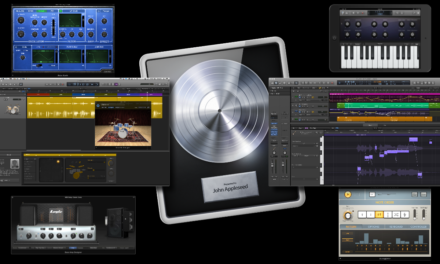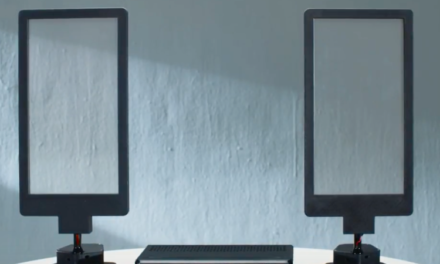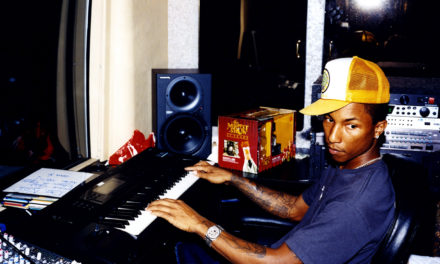Just what is it with 432Hz that people are so gung ho about?
Musicians and music fans far and wide believe that it is the natural frequency of the universe, or that it can somehow cure all of mankind with its healing energy. Many feel that 432 is reflected in ratios of the sun, Earth, moon, and all of the equinoxes. 432 seems to be a number of great significance to some, though is there any real evidence to back up these claims?
This is what we’re going to be exploring today.
What Is 432Hz Music?

To understand 432Hz, I feel it is necessary, to begin with, 440Hz. When it comes to modern music, 440Hz has been the established tuning standard since its adoption by the International Standards Organization in 1953. The pitch is the A above Middle C, and primarily provides a note around which musicians can tune their instruments too.
Why Was It Made Standard?

Strangely enough, up until around 1859, nobody had ever tried to make a standardized pitch. From country to country, and even city to city, you could find tunings that varied from one place to the next. The French eventually decided to pass a government law, establishing 435Hz as the standard. In 1939, that all changed when the inter-nation conference set the standard to 440Hz, which we commonly refer to as “concert pitch.” Since its establishment, there have been many musicians across the world pushing to change the standard to 432Hz, otherwise known as “Verdi’s A.” It was named after the composer Giuseppe Verdi, who preferred to use the 432Hz standard for its universally and mathematically consistent qualities.
Difference Between 440 and 432

Now to understand the difference or significance of the difference between the two, we must take it back to the discovery of the Schumann Resonance. In 1952, German physicist, Winfred Otto Schumann, discovered and documented the Schumann resonance, by nothing that global electromagnetic vibrations exist within a cavity between the Earth’s surface and the inner edge of the ionosphere.
He recognized that the frequencies of those electromagnetic waves were incredibly low, and hovered somewhere around 7.86Hz to 8Hz. They are essentially the frequencies of which the world beats. This particular frequency resonates with 432Hz if you divide into octaves, giving people the sense that it is attuned to the natural electromagnetic frequencies of the earth.
We see it like this:
On the scale of 440Hz, C rests at about 261.656Hz. If we begin at the Schumann Resonance (8Hz) and count up by 5 octaves, we’ll reach a frequency of 256Hz. This frequency is C in the scale where A is 432Hz. Basically, the Schumann Resonance can be divided equally into 432, giving many the belief that it has unique powers.
Why Do People Think 432Hz is Special?

It Helps You To Feel Music More
Many believe that 432Hz sounds more beautiful and harmonious to the ear in general. They think that this beauty better resonates with the body, at the spine and heart. Many feel that 440Hz offers a far more outward or logical experience, while 432Hz is able to move in a non-linear fashion to help fill a room. Check out the difference and see how it makes you feel:
It Is of Great Spiritual and Scientific Significance
If you look through old spiritual texts found in ancient sites, you can read about the significance of 432Hz and its harmonics. The number has also been found to correlate with different facts or theories. Here are a few:
The sun is around 864,000 miles in diameter. 432 x 2 = 864. While that may seem like consequence, also consider the diameter of the moon, which is 2160 miles. 432 x 5 = 2160. There are also 864,000 seconds in one day.
In Hinduism, the Kali Yuga is said to last 432,000 years. The Kali Yuga is only part of a greater cycle known as the Great Cycle, which lasts 4,320,000 years.
Traditional yoga schools teach you that ALL living beings exhale and inhale 21,600 times in a day. 21,6000 x 2 = 43,2000.
Wilson says that a computer confirmed the most exceptional golf ball around was the Wilson 432, a golf ball with 432 dimples.
It is Great for Meditation
Many people love to meditate with 432Hz music. They believe that it is extremely powerful if you’re looking for a deep cleansing or higher consciousness. One of the big reasons they think that it makes for excellent meditation music is that the natural harmonics resonate with the mind and body, creating a deeper and more relaxed experience.
What Does Science Science Actually Say About It?

Just like within the music community, there is much debate around the significance of 432Hz in the scientific community. Most of the debate is skewed towards the side of 432Hz being a hoax.
432Hz and the Heartbeat
Many people believe that 432Hz is the 360th harmonic of our heartbeat when it is beating at 72 beats per minute or 1.2Hz. Science says that this assumption is entirely false, as your heart range is in a constant shift depending on the type of work that you are doing. Consider also that the rate your heart beats will change with age. This means that 432Hz has no direct link with your heartbeat.
432Hz and Water
In 2010, a Dutch Author named Robert Boerman published two photos of the 440Hz and 432Hz frequencies with their effects on water. Water was placed on a vibrating plate that was tuned to different frequencies to see its impact. People saw this as somewhat of a scientific demonstration on the difference in energy between the two frequencies. Because the image of 432Hz is far more beautiful in a subjective manner, people began to view it as far more superior. Beyond its artistic and anecdotal characteristics, this photo was said to hold no scientific value.
You also must consider the fact that the type of surface on the plate, as well as the dimensions of the plate, play a significant role in whether or not a frequency will resonate with it cleanly.
432Hz and Feeling
Modern studies are pretty lacking when it comes to frequencies and their effects on our biology. Speculating that one note of 432=A will make you feel better than 440=A, merely is speculation with a different intention. If we have the knowledge that one will make us feel better than the other, it might shift our reality. Of course, it may be entirely true, though unfortunately, we do not have enough in current science to say for sure.
Debunking Some Common Myths About 432Hz

Pythagoras’ A was 432Hz.
The fact is that Pythagoras’ tuning was based on a system of ratios rather than absolute pitch. You could instead refer to his system as a reference on an arbitrary pitch. If you consider ancient science, you must also understand that there is pretty much no way that Pythagoras could have understood the meaning of “Hz.” The idea that 432 is a multiplication of the ratio between C and A leaves out the fact that is the ratio between other notes as well.
You also have to consider that the cycle of perfect fifths was what Pythagoras built his system off of. The thing is, you can go around the circle of fifths forever, and you’ll never hit a complete circle unless one of those fifths is diminished. This means that you would have to tune down a bit every octave, in turn playing with an uneven temperament. This is why Pythagoras’ system never stuck around.
Ancient Instruments Were Tuned to 432Hz
Many believe that ancient singing bowls from Tibetan monks, as well as ancient instruments unearthed from Greek and Egyptian sites, were purposefully tuned to 432Hz. The issue is that, up until 1834, it was impossible to accurately measure “cycles per second.” This means that there is no way Ancient Egyptians, Tibetans, Greeks, or beyond, could have tuned their instruments to 432Hz with an intention in mind.
Verdi and Mozart Used 432Hz Exclusively.
This is a massive misconception that seems to be the basis for many 432Hz arguments. There is only one shred of evidence as to the tuning that Mozart used, and that is from a 1780s tuning fork that belonged to a man named Johann Andreas Stein. Johann was the most prominent piano maker in Vienna during Mozart’s years, making it more than likely that he built pianos for Mozart, as well as some other famous composers of the time. His tuning fork had a tone of 421.6=A, a reasonably long ways away from 432.
As for Verdi, he was known to use many different tunings throughout his professional life. Because he composed many operas, he became aware that certain tones or pitches were putting a struggle on his singers. There were a few points where he asked his “Requiem” to be tuned down to 435Hz, and eventually 432Hz. His reasoning was not that it connected listeners to the cosmos better, or that it had healing properties, but that it was merely a matter of creating less strain for his singers with a lower pitch.
432Hz is the Frequency of Our Brain and the Earth
When it comes to our brainwaves, they oscillate at a range between .5Hz and 42Hz. This means that no specific brainwave frequency can be divided into 432Hz. It is not corollary in any way.
As for the Schumann Resonance, or the resonance of the Earth, it actually lies somewhere between 7.83Hz and 8Hz (not exactly 8Hz) If you went 5 octaves above 7.83 instead of 8, you would end up around 430.65. While it may be closer to 432 than 440, it is undoubtedly far from exact.
Music Is More Pleasing at 432Hz
The way that you perceive music’s beauty is entirely subjective. Many different orchestras around the world use different pitches based on the types of music that they are playing. If we go back to the Baroque era, pieces could be found in pitch levels as high as A-465 and as low as A-392. Because of this, many concert musicians will carry around different tuning forks to play in different styles.
The tuning of an instrument can have an effect on how that single instrument sounds because of its physical properties and resonance, though there is no overarching tuning that works best for all instruments.
Conclusion
432 is one of those numbers that people will do anything to find significance in. As we know it now though, it doesn’t have any cosmic or spiritual properties that we can scientifically measure. It comes down to the preference of the listener as to whether or not it is better or worse.
If you are interested in trying it for yourself, grab a tuner and tune your instrument to A-432. There is no law against doing so! Many professional musicians out there will vary their tunings depending on the style, composition, instrument, etc.
We hope that this article settled some debate to the big 432 questions. Any thoughts on the matter? Let us know in the comments!






Hi Tyler
Could you explain a bit more in depth the math for the 256hz and others frequencies? Please make the explanation more analytic so we can remake them without any music notions like octave, …
Also there should be somewhere in the universe some laws to produces the reality we live in. And musicians at least a few surely knows about them: it’s a bit like architecture, there is a physics for building according to mechanics of forces, and there is or are several mechanics of sounds to create musics.
And there are probably elements such as certain frequencies in our universe according to how it works and is organised to produce harmonious sounds.
I found articles about Prince saying 432hz is the golden standard. Maybe the trick is the relationship between the notes or sounds used to make a music and not the sounds themself.
Anyway by cynematic we can see that water vibrates differently at certain frequencies and produces different pattern, this has been investigated by Emoto and for 528hz by Horowitz.
What is sure is that certain frequencies produce certain colors, thus it should be the same for sound and there should be some special numbers and frequencies like there is in math in certain space and geometries.